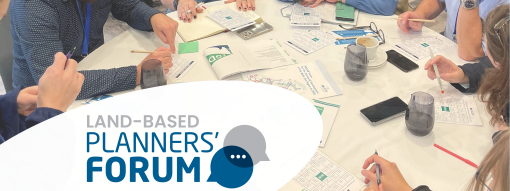The update of the VASAB Long-Term Perspective – first draft given to public hearing
After updating VASAB Long Term Perspective and elaborating first draft of the VASAB Vision 2040, VASAB launches the Stakeholder consultations that will take place till 15 July 2022.
The update of VASAB Long-Term Perspective aims at achieving territorial cohesion in 2040 and seek answers on how a desired Baltic Sea Region would look like by 2040 and how its maritime and spatial planning will be evolved by then.
All stakeholders are kindly invited to share their views and feedback for the draft Vision 2040 – their contribution will play an important role in further nuancing and refining the Vision document, as well further discuss potential actions or project ideas that could help in the implementation of VASAB Vision 2040.
How to participate?
Several activities are going to be organised targeted to both pan-Baltic and national stakeholders along with bilateral meetings with key stakeholders and Policy area coordinators of EU Strategy for the Baltic Sea Region.
Save the date! On 16th May an online Stakeholder workshop will be organized to discuss the draft VASAB Vision 2040. More information will be available shortly in the VASAB website.
Stakeholders are invited to share their views and feedback on draft VASAB Vision2040 via ONLINE SURVEY or sent to elina.veidemane@vasab.org till 15 July 2022 as latest. Materials of draft VASAB Vision 2040 are available HERE.
For further information or inquiries, please, contact elina.veidemane@vasab.org
Why is the update of the VASAB vision necessary?
Visions are a powerful tool, as they define a desirable future, shared by people who wish to make a desirable change for the next generations.
VASAB has been a pioneer in developing spatial visions, dating back to the first VASAB vision “VASAB 2010. Towards a Framework for Spatial Development in the Baltic Sea Region” in 1994. Recent update of VASAB Long-Term Perspective aims at achieving territorial cohesion in 2040 and seek answers on how a desired Baltic Sea Region would look like by 2040 and beyond and how its maritime and spatial planning will be evolved by then.
What can be a desirable future for the Baltic Sea Region?
For 2040 the healthy Baltic Sea is the core asset of the Baltic Sea Region. By 2040, there is a clear shift to sustainability and wise use of technology, while cooperation, solidarity and integration are a must. The VASAB spatial vision for the Baltic Sea Region in 2040 is structured along four territorial elements represented by four different metaphors: the pearls, the strings, the patches and the system.
The pearls represent the urban network and settlement structure of the region, where local pearls, small and medium-sized pearls and metropolitan pearls, sharing different territorial characteristics, thrive by each building on their own comparative advantages and economic activities. The future for the pearls lies in the networks, as all are networked to each other within and beyond their vicinity and even beyond the Baltic Sea Region.
The strings represent the physical and virtual connectivity for goods, people and knowledge in the Baltic Sea Region. Well-connected physical and virtual strings between people and places are characterised by a sustainability shift towards green, sustainable and affordable connections. Rail and maritime connections increase in importance and gradually substitute environmental costly air and car connections. Energy strings reflect a carbon neutral energy production which is decentralised, secure and well-connected throughout the Baltic Sea Region.
The patches are the lungs of the Baltic Sea Region. They represent the sustainable management of the commons and provide the ecosystem services in the region. The high level of biodiversity, the rich flora and fauna, the healthy sea environment, the intact ecosystems, the sustainable agricultural, food and energy production ensure in 2040 a good quality of life for all citizens in all parts of the region and form a mosaic of the Baltic Sea Region’s natural and cultural heritage.
The system represents the spatial planning at sea and land, characterised by strong cooperation and smooth communication across different levels of governance, spatial planning systems, sectoral policies and various kind of borders. It is also characterized with high citizen involvement that carries over the decisions and plans. Territorial monitoring, assessments and digital solutions are important for further evidence development, exchanging information, sharing data and developing synergies.



